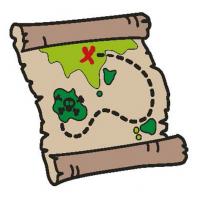Exercises in Retelling Stories - Key Stage One
One effective way to enhance your pupils' understanding of stories is through retelling. Retelling stories not only helps KS1 pupils improve their comprehension, but also boosts their vocabulary, language skills, and creativity. In this blog post, I will share some engaging exercises that you can incorporate into your lessons to encourage your pupils to practice retelling stories.
1. Story Sequencing
Sequencing is a fundamental skill when it comes to retelling stories. Provide your pupils with a set of picture cards depicting the key events of a story. Encourage them to arrange the cards in the correct order, retelling the story as they go along. This activity helps pupils understand the structure of a narrative and reinforces their memory of the story's events.
2. Story Mapping
 Story mapping is another useful exercise to help pupils retell stories. Provide your pupils with a simple story map template where they can fill in the main characters, setting, problem, events, and solution of a story. By mapping out these elements, pupils gain a deeper understanding of the story's components and can retell it more effectively.
Story mapping is another useful exercise to help pupils retell stories. Provide your pupils with a simple story map template where they can fill in the main characters, setting, problem, events, and solution of a story. By mapping out these elements, pupils gain a deeper understanding of the story's components and can retell it more effectively.
You can make this activity even more interactive by using a large story map on the classroom wall. As you read a story aloud, invite pupils to come up and place sticky notes with key events or characters on the map. This collaborative approach encourages active engagement and helps pupils visualize the story's progression.
3. Puppet Show
Puppet shows are a fantastic way to bring stories to life and enhance retelling skills. Divide your pupils into small groups and assign each group a different story. Provide them with puppets or encourage them to create their own using craft materials. Give them time to practice retelling their story using puppets, and then invite them to perform for the class.
Puppet shows not only make retelling fun but also develop pupils' oral presentation skills and boost their confidence. Encourage the audience to ask questions about the story and provide positive feedback to all the performers.
4. Story Retelling Cubes
Create story-retelling cubes by drawing or printing pictures representing different story elements on each face of a large dice. Pupils can take turns rolling the dice and using the picture that comes up to retell the story. This activity adds an element of surprise and creativity to the retelling process, making it more engaging for the pupils.
5. Story Retelling Journals
 Provide each pupil with a small notebook and encourage them to create their own story-retelling journal. After reading a story, ask pupils to choose a key event or character from the story and write about it in their journal.
Provide each pupil with a small notebook and encourage them to create their own story-retelling journal. After reading a story, ask pupils to choose a key event or character from the story and write about it in their journal.
They can also draw a picture to accompany their writing. This activity allows pupils to reflect on the story in their own words and helps strengthen their writing skills.
6. Story Retelling Charades
Turn story retelling into a fun game of charades. Divide your pupils into teams and provide each team with a set of story cards. One pupil from each team will act out the story using gestures and body movements while their teammates guess the story being retold. This activity encourages pupils to use non-verbal communication to convey the story's events, enhancing their comprehension and creative thinking skills.
Remember, the key to successful retelling exercises is to provide a supportive and encouraging environment where pupils feel confident enough to express their ideas. By incorporating these activities into your lessons, you will not only help your pupils develop their reading comprehension skills but also foster their love for storytelling and creativity.
Looking for More KS1 Literacy Activities and Top Tips?
Our Key Stage One Literacy Resource can help!
Discover our top 10 considerations, FAQ's, fun activities, common mistakes to avoid, and some of our top resources for literacy teaching by clicking below!

